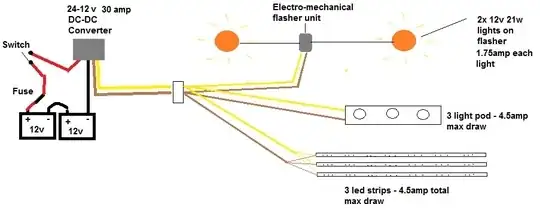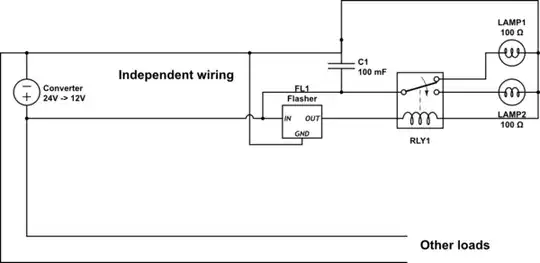I have a friend who has asked me to help him sort out his truck lighting. It is a 24v truck with a 24-12v dc-dc converter for the body. It has 2 flashing lights, that when active make all the other lights on the body flicker. When I disconnect the flashing lights the other lights are bright and stable so it must be the cause or part of it. I have checked all the wiring, the supply is 12awg,then from a distribution block each load has 18awg cable. The converter is a 30amp rated model(I'd guess 20amp continuous which should be plenty for the modest lighting). I've added an image, I hope it is clear enough.
Any suggestions on the cause, and solution? I would prefer to keep things as original as possible as I have not looked up the driving regs on these lights yet. However I would consider an LED replacement.
Thank you for any help and information. I appreciate what all you people with knowledge do on these forums.
